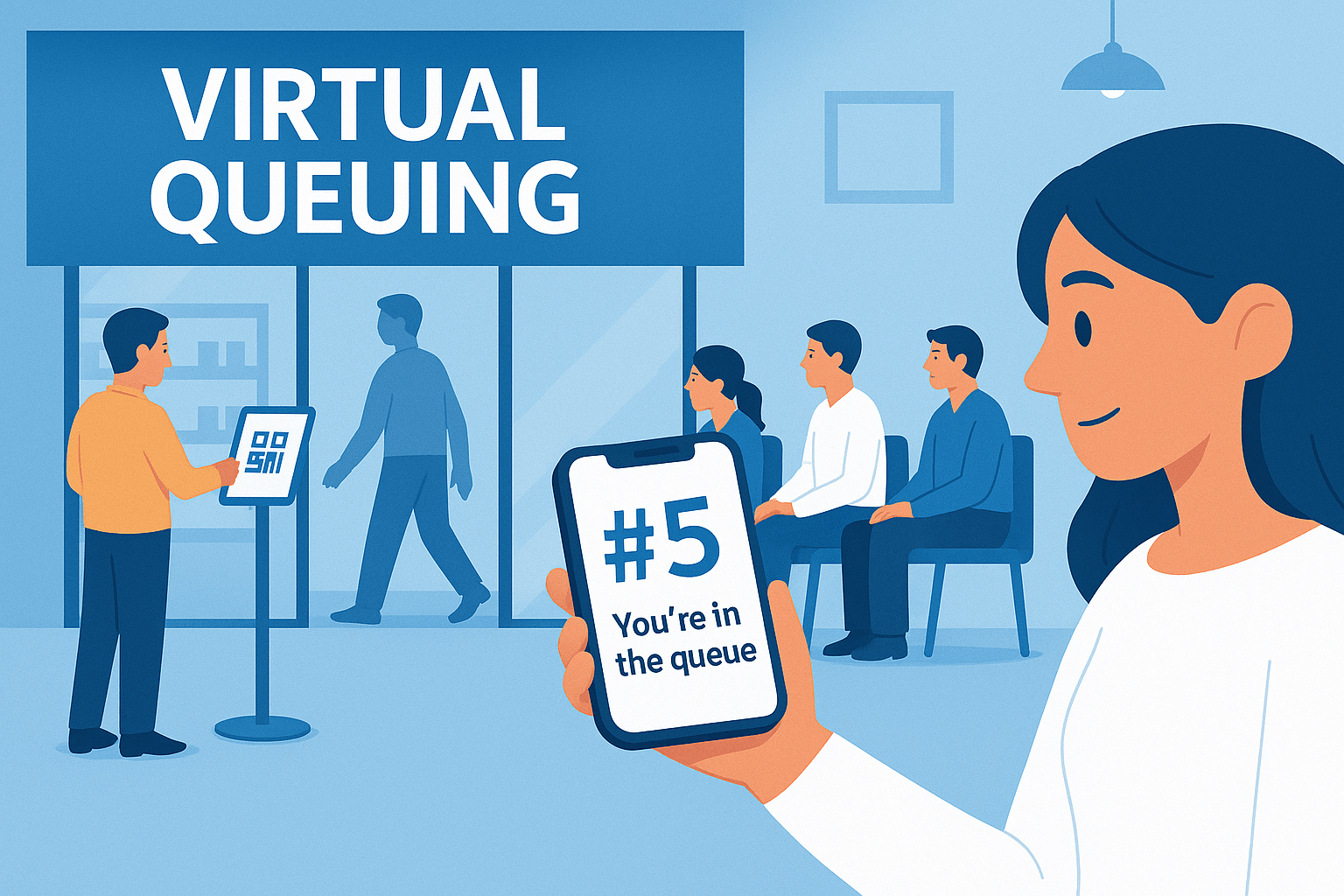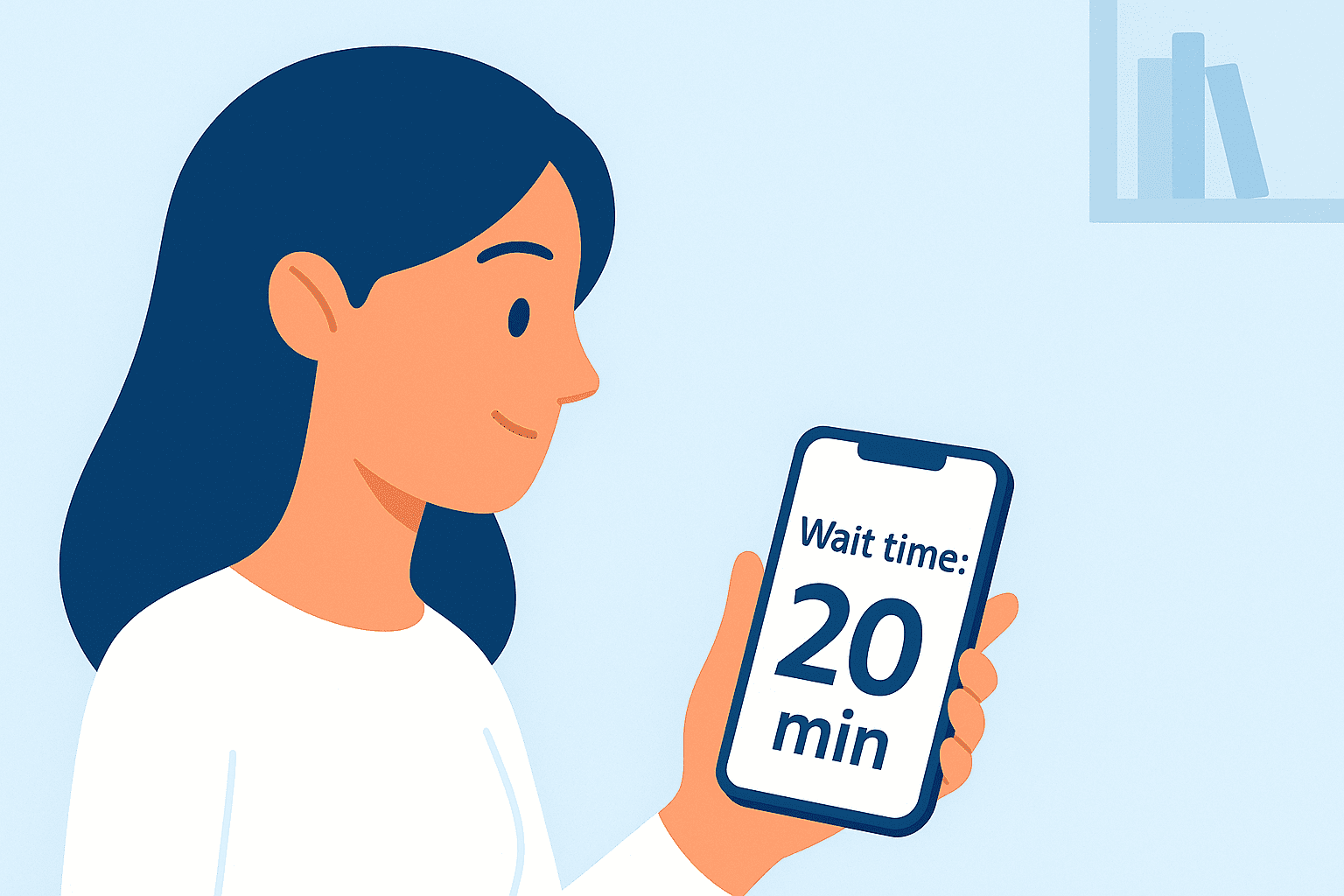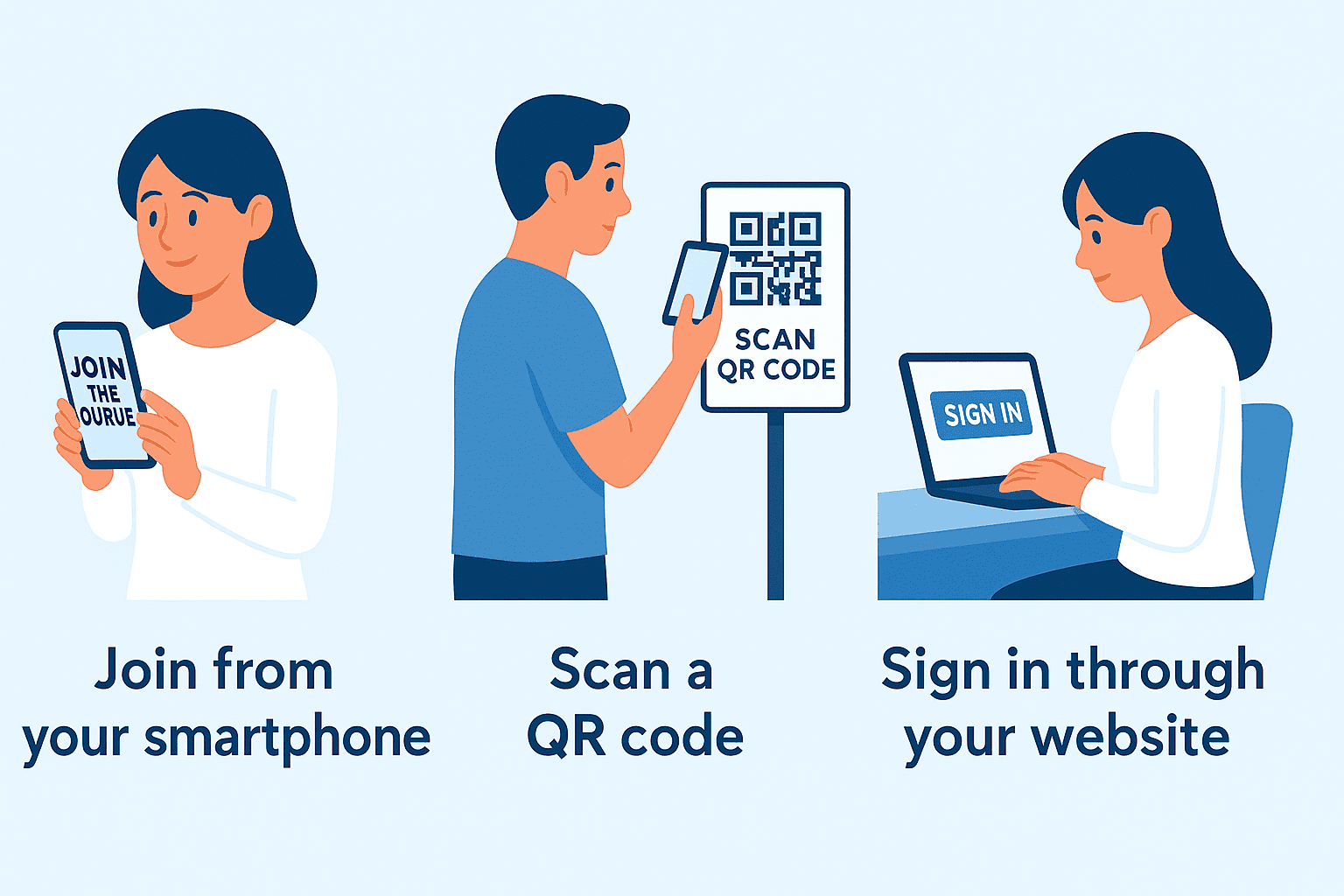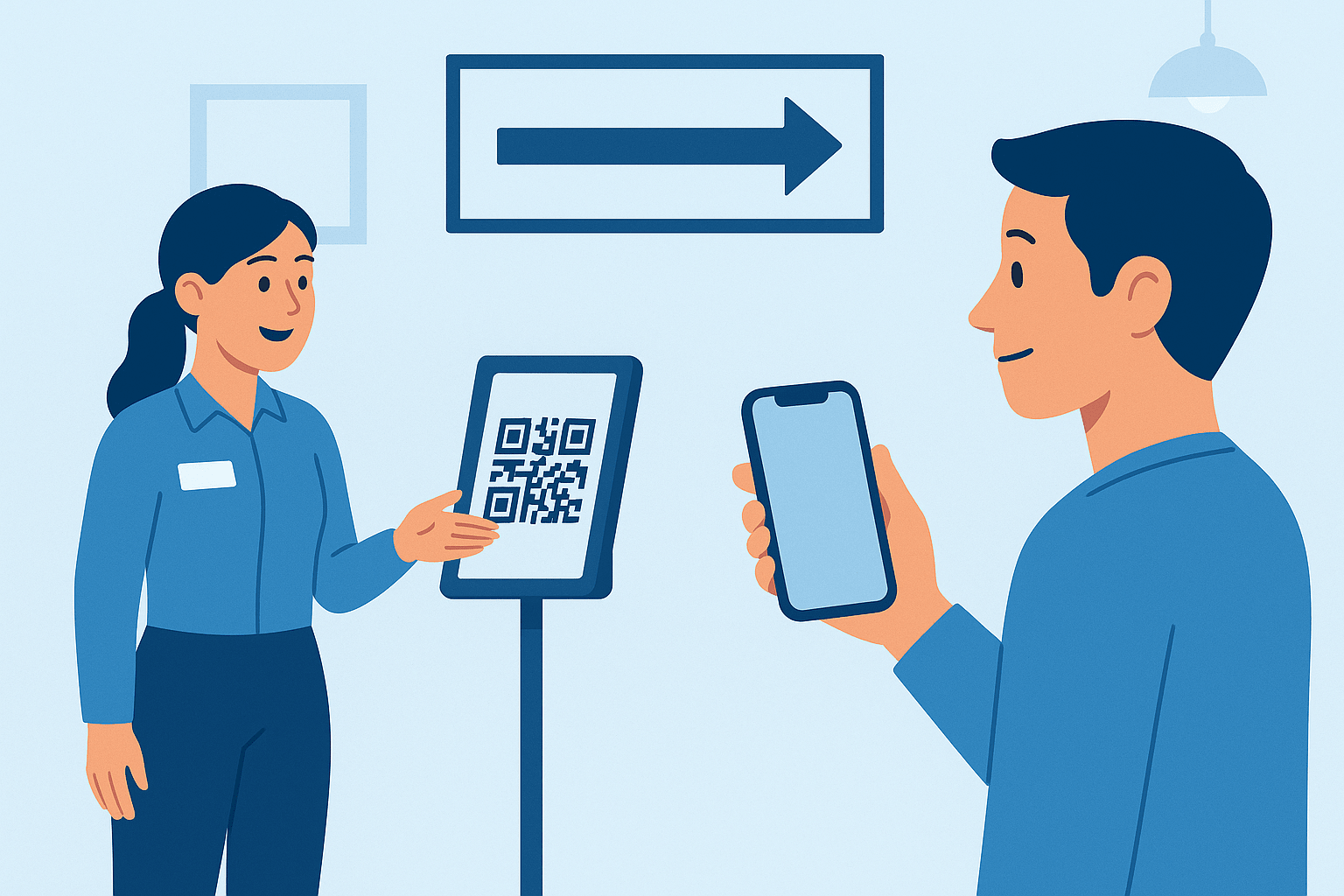Mastering Customer Flow: Why a Customer Queue Management System is Essential in 2025

Introduction
In today’s fast-paced world, convenience isn’t just appreciated — it’s expected. Customers want efficient service with minimal hassle, and how you manage waiting times can be the make-or-break moment in their experience with your business.
Enter the customer queue management system — a powerful tool for turning chaos into order and frustration into satisfaction. As we move through 2025, queue management is no longer just a way to handle crowds; it’s a strategic necessity for businesses that want to deliver exceptional customer service and scale their operations.
In this guide, we’ll explore what a customer queue management system is, why it matters more than ever, and how your business can leverage it to boost efficiency, reduce wait times, and elevate the overall customer journey.
What is a Customer Queue Management System?
A customer queue management system (CQMS) is a digital or hybrid solution that helps businesses manage how customers wait for service. It replaces traditional lines with streamlined systems that organize traffic, reduce stress, and keep customers informed.
Core Functions:
Digital check-ins (via kiosk, app, or web)
Ticketing (virtual or physical)
Real-time queue status and updates
Wait time estimates
Reporting and analytics
Types of Systems:
Physical Queue Systems – Traditional “take-a-number” setups with signage and waiting areas.
Virtual Queue Systems – Customers check in remotely via smartphone, eliminating the need for on-site waiting.
Hybrid Systems – Combines both digital and physical elements to serve walk-ins and tech-savvy customers alike.
Why Businesses Need a Customer Queue Management System in 2025
Let’s look at the numbers:
83% of U.S. consumers say convenience is more important now than it was five years ago.
1 in 3 customers will walk out if forced to wait more than 5 minutes without knowing how long it will take.
Businesses using queue management solutions report up to 40% reduction in wait times and 30% higher customer satisfaction scores.
In an era where customer experience (CX) drives loyalty, businesses that ignore queue management are leaving revenue — and reputation — on the table.
Case Study Example:
A national electronics retailer deployed a queue management system across 80 U.S. locations and saw:
A 38% drop in customer walkouts
A 22% rise in average transaction value
A significant boost in staff efficiency and satisfaction
Key Benefits of a Customer Queue Management System
1. Shorter Wait Times
Smart queue routing minimizes delays by matching customers with available service reps or stations quickly and efficiently.
2. Happier Customers
When people know how long they’ll wait and can wait their way (on their phone, browsing, etc.), they feel more in control.

Queue Management System Showing Real-Time Wait TimeUsing a customer queue management system on a smartphone to view wait time, showcasing how digital tools enhance queue transparency and customer satisfaction.3. Streamlined Operations
Queue data helps you understand traffic patterns, service durations, and peak times — so you can staff smarter.
4. Data-Driven Decisions
Use detailed analytics and reports to improve processes, predict busy periods, and refine the customer journey.
5. Increased Revenue Opportunities
When wait times drop and satisfaction rises, conversions increase — whether it’s sales, signups, or service upgrades.
6. Better Use of Staff
Free up team members from managing lines manually. Let them focus on delivering great service instead.
Industries That Rely on Queue Management Systems
Queue management isn’t just for big-box stores. It’s crucial across a variety of U.S. sectors:
Retail
Manages foot traffic and creates smoother checkout experiences during sales, holidays, or high-traffic weekends.
Healthcare
Optimizes patient flow, reduces lobby crowding, and improves appointment management for clinics, hospitals, and urgent care centers.
Banking & Financial Services
Reduces wait times for teller and advisor services, improving the branch experience.
Government & DMV Offices
Streamlines appointments, minimizes congestion, and enhances public trust in essential services.
Hospitality
Hotels, casinos, and restaurants benefit from reduced wait times and improved guest satisfaction.
Must-Have Features in a Queue Management System
1. Mobile Check-In & QR Codes
Let customers join the queue from their smartphone, scan a QR code, or sign in through your website.

Ways to Access a Customer Queue Management SystemHighlights how customers can join a customer queue management system using their smartphone, scanning a QR code, or signing in online—offering flexible, user-friendly entry points.2. Live Notifications
Keep customers updated via SMS, push notification, or email — so they know exactly where they stand.
3. Real-Time Dashboards
Monitor wait times, queue lengths, and staff performance on the fly.
4. Appointment Scheduling
Blend scheduled appointments with walk-ins for optimal flow management.
5. Multi-Location Support
Perfect for chains or franchises that want centralized control with local flexibility.
6. Integration with CRM/POS Tools
Capture customer data during service, connect it to loyalty programs, or analyze behavior for upselling opportunities.
Virtual vs. Physical Queue Management Systems
Virtual Systems
Best for tech-friendly customers and mobile-first environments
Reduces crowding in physical spaces
Ideal during public health concerns (e.g., flu seasons)
Physical Systems
Still useful in areas with lower tech adoption
Useful for seniors or non-digital native demographics
Easy to implement and scale in simple service environments
Hybrid Approach
Serves all types of customers
Offers maximum flexibility
Ensures seamless transitions between walk-ins and online check-ins
How to Implement a Queue Management System
Step 1: Identify Pain Points
Map out your current process. Where are customers waiting too long? Where is staff overwhelmed?
Step 2: Choose the Right Solution
Look for a provider like QueueAway that offers mobile-first tools, appointment integration, and scalable architecture.
Step 3: Train Your Team
Ensure employees understand the system, how to monitor queues, and how to support customers using it.
Step 4: Educate Customers
Use signage, digital prompts, and proactive staff communication to explain how to check in or join a virtual queue.

Guided Check-In with Customer Queue Management SystemDemonstrates how staff can use signage and digital prompts to help customers check in to a customer queue management system, enhancing clarity and reducing wait-time confusion.Step 5: Monitor, Test, Optimize
Analyze performance regularly. Test different configurations to find the best setup for your business hours, staff levels, and customer flow.
Emerging Trends in Queue Management for 2025
1. AI-Powered Queues
Artificial intelligence is being used to predict peak times, adjust service routing, and manage staffing levels dynamically.
2. Smart Devices & Sensors
IoT sensors can track movement, occupancy, and queue lengths in real-time.
3. Hyper-Personalized Queueing
Recognize returning customers, provide VIP fast-tracking, or tailor service based on profile history.
4. Omnichannel Queue Management
Customers can enter queues from your website, app, in-store kiosk, or even social media — ensuring a consistent, cross-platform experience.
Why QueueAway is the U.S. Leader in Customer Queue Management
QueueAway is a U.S.-friendly, modern solution for businesses looking to overhaul how they manage foot traffic and service delivery. Whether you’re a growing chain or a single-location service provider, QueueAway helps you create a world-class customer experience.
Key Features:
Mobile-friendly digital check-ins
SMS/Email queue notifications
Appointment + walk-in integration
Cloud-based dashboards
Full U.S. customer support
Trusted by businesses nationwide, QueueAway is designed to improve your operations today and scale with you into the future.
👉 Discover how QueueAway works
👉 Schedule a free demo
Conclusion
In 2025, customer experience is everything — and how you manage queues speaks volumes. A customer queue management system isn't just a technical tool; it's a customer experience solution, a retention strategy, and a brand builder.
From reducing wait times to boosting satisfaction and improving internal efficiency, the right system will transform your business. Choose a scalable, mobile-ready solution like QueueAway, and turn every wait into a seamless experience.
FAQs
How does a customer queue management system work?
It organizes customer flow using digital tools like mobile check-ins, ticketing systems, notifications, and service analytics to improve efficiency and satisfaction.
Is queue management software expensive?
Not at all. Solutions like QueueAway offer affordable monthly plans starting from around $60/month — with full customization and scalability for larger enterprises.
What’s the ROI of a queue management system?
Most businesses see improved retention, higher customer satisfaction, and better staff productivity — leading to long-term revenue growth.
Can small businesses use these systems?
Yes — they’re especially valuable for local clinics, salons, or boutique retail stores that want to look professional and serve customers efficiently.


